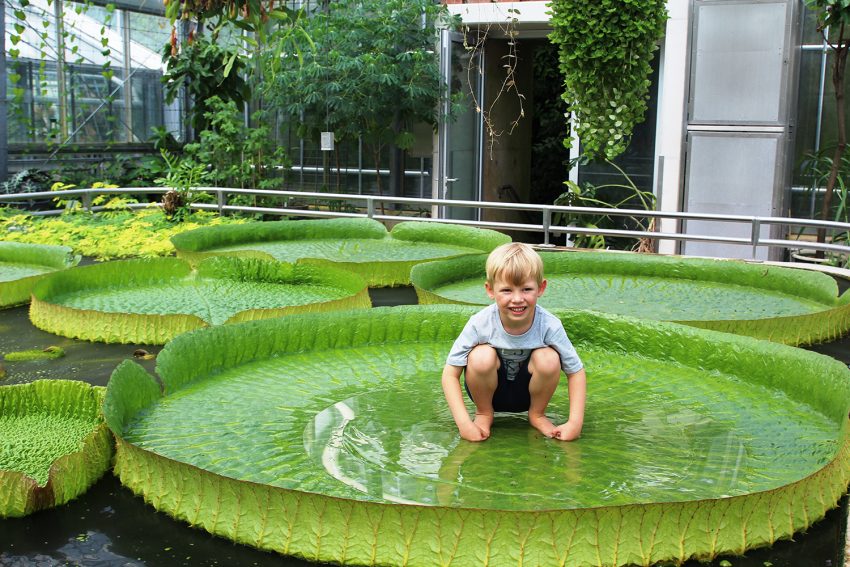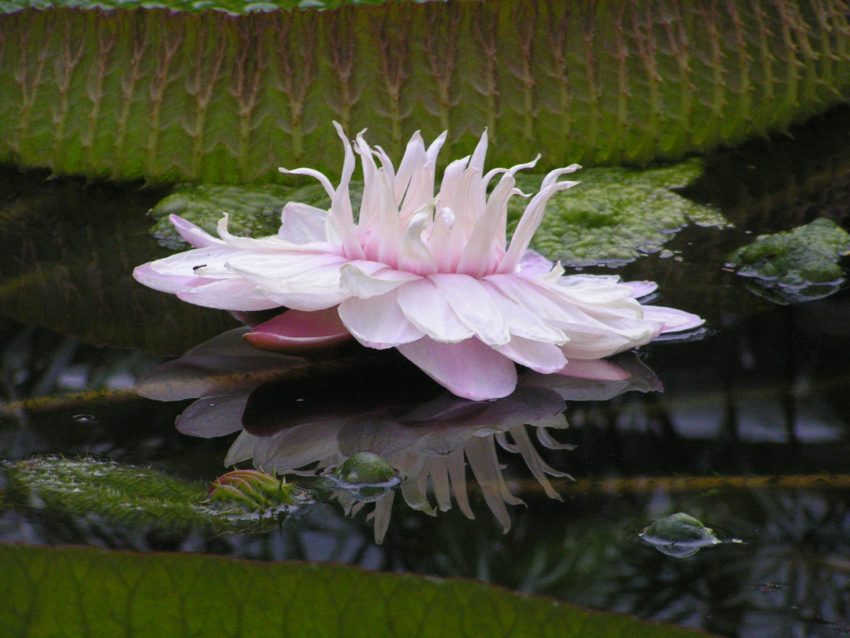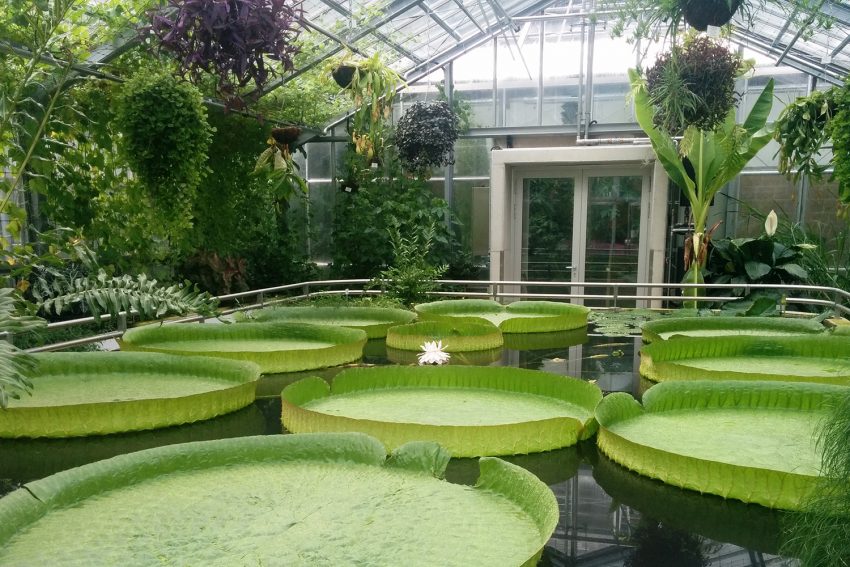Giant Water Lily Victoria Blooms on Two Evenings Opening hours of the Botanical Garden extended
Next week, the time has come. On two nights, the probably most impressive plant of the Botanical Garden, the Tropical Giant Water Lily, Victoria cruziana, will be in bloom. To ensure that many people can marvel at the blossom, TU Braunschweig’s Botanical Garden is extending its opening hours. On 15 and 16 August, visitors will be able to admire the blossoms until 22:00, obtain information about plants and the garden, and purchase some rare plants. The Freunde des Botanischen Gartens e. V will be providing refreshments on both evenings.
The Victoria, so named in honour of the young Queen of England, was discovered in 1801 by the German botanist Thaddaeus Haenke in the lagoons of one of the tributaries of the Amazon. For a long time, people doubted his information about this giant “botanical mythical creature”. It was only decades later that his information was confirmed by other researchers. In 1846, the first seeds germinated in London’s Kew Garden. Three years later, in November 1849, the first flower of this giant water lily opened on European soil.

A leaf can carry up to 35 kg – four-year-old Theo shows that it works. Photo credit: Michael Kraft/TU Braunschweig
Giant leaves up to two metres in size
In the Botanical Garden of TU Braunschweig, this perennial plant is grown from seed. In the tropical aquatic plant house it reaches huge dimensions in a vegetation period of seven months. Our species “Victoria cruziana” is native to the Paraná river basin and Paraguay. In the summer months, the plant develops shield-shaped giant leaves with a pie-plate-like curved edge, up to two metres in diameter. The large leaf surface has a plastically protruding, air-filled skeleton on the underside, which can be compared to struts and accounts for the leaf’s load-bearing capacity. When loaded evenly, a single leaf can carry a child with a body weight of up to 35 kg.

The giant water lily only flowers on two evenings. The first with fragrant large white flowers and the second in pale pink. After that, the flower submerges under water. Photo credit: Michael Kraft/TU Braunschweig
The flowers only open on two evenings
Fully developed, the many-rayed, white, fragrant large flowers then open on July and August evenings to close in the morning of the next day. The process is repeated in the late afternoon of the second day. Now the flowers open with a pinkish-red tinge, only then do the flowers submerge under water where the seeds ripen. The pea-like, dark brown seeds are collected in the homeland by the indigenous population as water corn, and flour is made from them.
In the Botanical Garden of TU Braunschweig, the Victoria can still be seen until mid-September, as from then on the natural day length is no longer sufficient for the growth of the “botanical mythical creature”.
Marvel, inform, stroll, eat and drink
On both evenings, the members of the Freunde des Braunschweiger Botanischen Gartens e.V. (Friends of the Braunschweig Botanical Garden) will be providing refreshments for visitors to the garden. The Botanical Garden team will be on hand at the information stand to answer any questions on the subject of plants and gardens and will be offering some rare plants for sale. The proceeds will go exclusively to the Botanical Garden.

